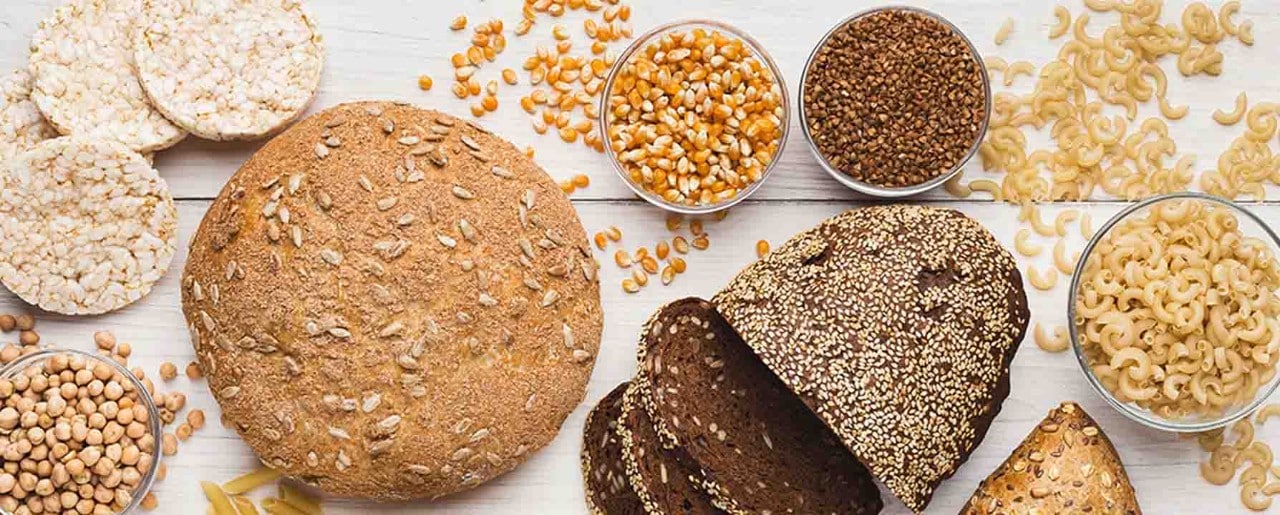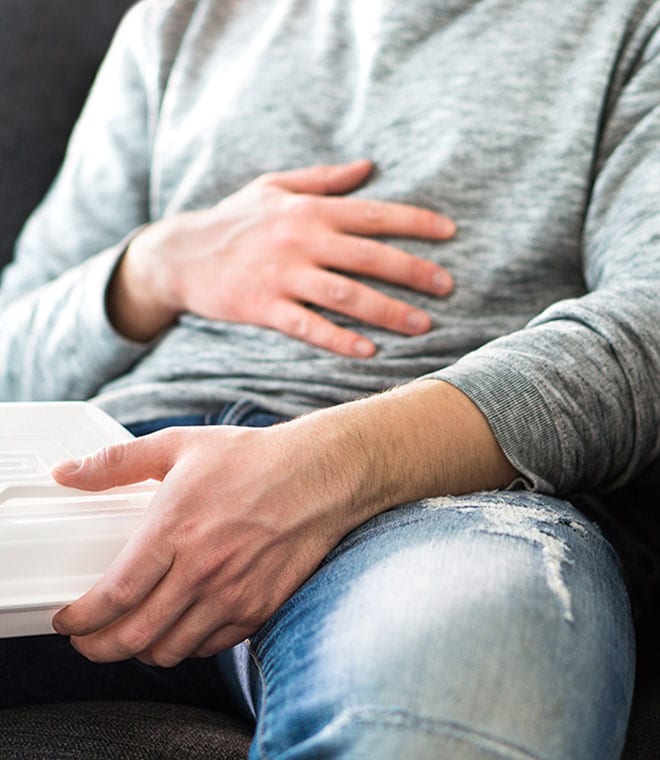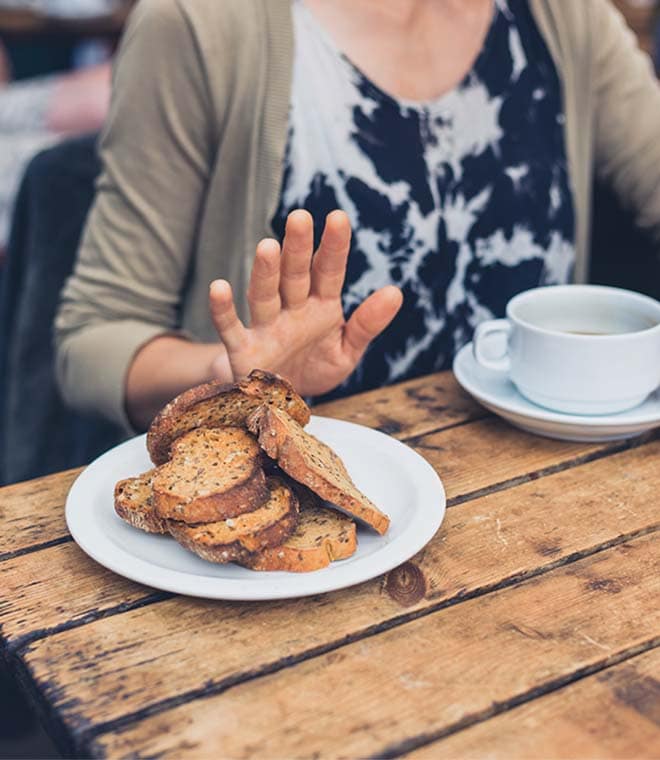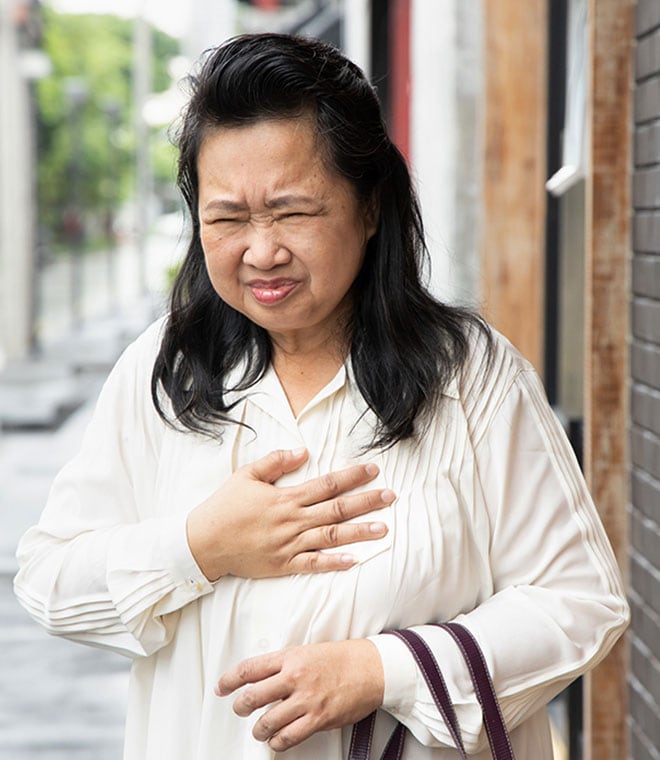Health
Gluten: What you need to know
By Jenilee Matz, MPH May 19, 2025 • 8 min
Chances are you know someone who is following a gluten-free diet. Maybe you've even tried gluten-free foods or made gluten-free recipes. But what exactly is gluten? And why are some people trying to avoid it?
What is gluten?
Gluten is the term for proteins naturally found in certain grains such as wheat, barley, rye, and a cross between wheat and rye called triticale. Gluten helps these grains maintain their shape.
What is a gluten allergy?
"Gluten allergy" is an incorrect term. You can have celiac disease, a sensitivity to gluten or an allergy to wheat, but there is no such thing as a gluten allergy.
- Celiac disease: With celiac disease, the body’s immune system is triggered by eating gluten. This results in damage to the small intestine. The symptoms of celiac disease can include chronic diarrhea, stomach pain, bloating, tiredness, headaches and more. If your healthcare provider suspects you have celiac disease, you'll likely have a physical exam and some tests. Blood tests can check for antibodies that are common in celiac disease. To confirm the diagnosis, you will also likely need a biopsy of your small intestine. If you're diagnosed with celiac disease, following a strict gluten-free diet is essential for managing this disease.
- Gluten sensitivity: Researchers are still learning about this sensitivity. People who are gluten sensitive may have unpleasant symptoms, such as stomachaches, muscle cramps and leg cramps when they eat foods that contain gluten. However, unlike celiac disease, gluten sensitivity doesn't appear to harm the small intestine. If your healthcare provider thinks you have gluten sensitivity, you may be tested to rule out celiac disease.
- Wheat allergy: With a wheat allergy, your body's immune system mistakes wheat for a harmful substance. To protect you, it produces antibodies (called Immunoglobulin E or IgE) that travel to cells to release chemicals, including histamine. These chemicals trigger symptoms of an allergic reaction. Wheat allergy symptoms can include hives, stuffy or runny nose, nausea, headaches, asthma and more. Your healthcare provider may do a skin prick test or a blood test if they think you may have a wheat allergy.
What is gluten-free?
"Gluten-free" is a term for foods that are not made from gluten-containing grains. Foods that are processed to remove gluten to less than 20 parts per million can also be labeled as gluten-free according to the Food and Drug Administration, or FDA. People who eat gluten-free avoid consuming foods that contain gluten.
What is a gluten-free diet?
A gluten-free diet is a diet that omits foods that contain gluten. This diet is essential in the treatment of celiac disease and those with other conditions linked with gluten.
Is gluten bad for you?
For most people, gluten isn't unhealthy or something to avoid. However, those with celiac disease or a medical condition associated with gluten need to avoid foods that contain gluten.
What foods contain gluten?
Foods made from wheat, barley, rye and triticale contain gluten. Foods with gluten include products made from these grains, like bread, pasta, pizza and crackers. Many other types of processed foods also contain gluten, such as frozen meals, processed meats and beer. Gluten-free versions of many of these products are available, including gluten-free bread and gluten-free beer. Gluten also hides in many nonfood products, such as hair care and skin care products, medicines and dietary supplements.
People often ask if the following foods contain gluten:*
Food |
Is it gluten-free? |
Is rice gluten-free? |
Yes |
Is oatmeal gluten-free? |
Yes. However, oats are commonly grown or processed next to wheat, so only eat oats labeled as gluten-free. |
Is quinoa gluten-free? |
Yes |
Are potatoes gluten-free? |
Yes |
Are oats gluten-free? |
Yes. However, oats are commonly grown or processed next to wheat, so only eat oats labeled gluten-free. |
Is ketchup gluten-free? |
Depends on manufacturer. Check label. |
Are lentils gluten-free? |
Yes |
Is whiskey gluten-free? |
Yes |
Is popcorn gluten-free? |
Yes |
Is cornstarch glute-free? |
Yes |
Is barley gluten-free? |
No |
Is wine gluten-free? |
Yes |
Is couscous gluten-free? |
No |
Is buckwheat gluten-free? |
Yes |
Are marshmallows gluten-free? |
Depends on manufacturer. Check label. |
Is chocolate gluten-free? |
Depends on manufacturer. Check label. |
Is risotto gluten-free? |
Risotto is made using rice, which is gluten-free. However, other ingredients in the recipe may contain gluten, so check the label. |
Are corn tortillas gluten-free? |
Yes |
Is peanut butter gluten-free? |
Yes |
Are French fries gluten-free? |
Depends on manufacturer. Check label. |
Is yeast gluten-free? |
Depends on the type of yeast. Baker's yeast and nutritional yeast are gluten-free. Brewer's yeast is not always free from gluten, so it's best to contact the manufacturer. |
Is polenta gluten-free? |
Yes |
Is bourbon gluten-free? |
Yes |
Is bacon gluten-free? |
While plain bacon is naturally gluten-free, some brands may contain additives with gluten, so check the label. |
Is wheatgrass gluten-free? |
Pure wheatgrass is gluten-free, but the seeds contain gluten, so check the label. |
Is millet gluten-free? |
Yes |
Is beer gluten-free? |
No |
Is tequila gluten-free? |
Yes |
Is hummus gluten-free? |
Yes |
Is sour cream gluten-free? |
Yes |
Is tofu gluten-free? |
Yes |
Is sourdough bread gluten-free? |
No |
Is tapioca gluten-free? |
Yes |
*If you must avoid gluten, it's important to read ingredient labels very closely. While many of these foods don't naturally contain gluten, the food may come into contact with gluten during the manufacturing process.
How to eat gluten-free
You may wonder how to go gluten-free. A gluten-free diet is especially important for people with celiac disease or a gluten-related disorder like gluten sensitivity to manage their condition.
Eating gluten-free means avoiding foods that contain gluten. Develop your gluten-free diet based on foods that are naturally gluten-free. These include fruits, vegetables, dairy products, meats, fish and seafood, nuts, beans and legumes. Since gluten can lurk in unexpected places, it's important to read ingredient labels carefully. You'll also need to ask questions about ingredients used and how food is prepared when you eat away from home. It's also important to be aware of cross-contamination. Even ingesting a small amount of gluten can trigger symptoms in some people with celiac disease.
If your healthcare provider advises you to eat a gluten-free diet to manage your health, it can be helpful to work with a registered dietitian who specializes in your condition. They can help you learn how to eat a balanced gluten-free diet to maintain good nutrition.
Updated by Amy Magill, MA, RDN, May 2025.
Sources:
- https://gikids.org/wp-content/uploads/2020/05/GlutenFreeGuide_Proof3.pdf
- https://celiac.org/live-gluten-free/glutenfreediet/sources-of-gluten/
- https://celiac.org/live-gluten-free/glutenfreediet/what-is-gluten/
- https://celiac.org/live-gluten-free/glutenfreediet/food-options/
- https://www.niddk.nih.gov/health-information/digestive-diseases/celiac-disease/eating-diet-nutrition
- https://medlineplus.gov/glutensensitivity.html
- https://www.aaaai.org/tools-for-the-public/conditions-library/allergies/celiac-disease
- https://www.beyondceliac.org/gluten-free-diet/is-it-gluten-free/




